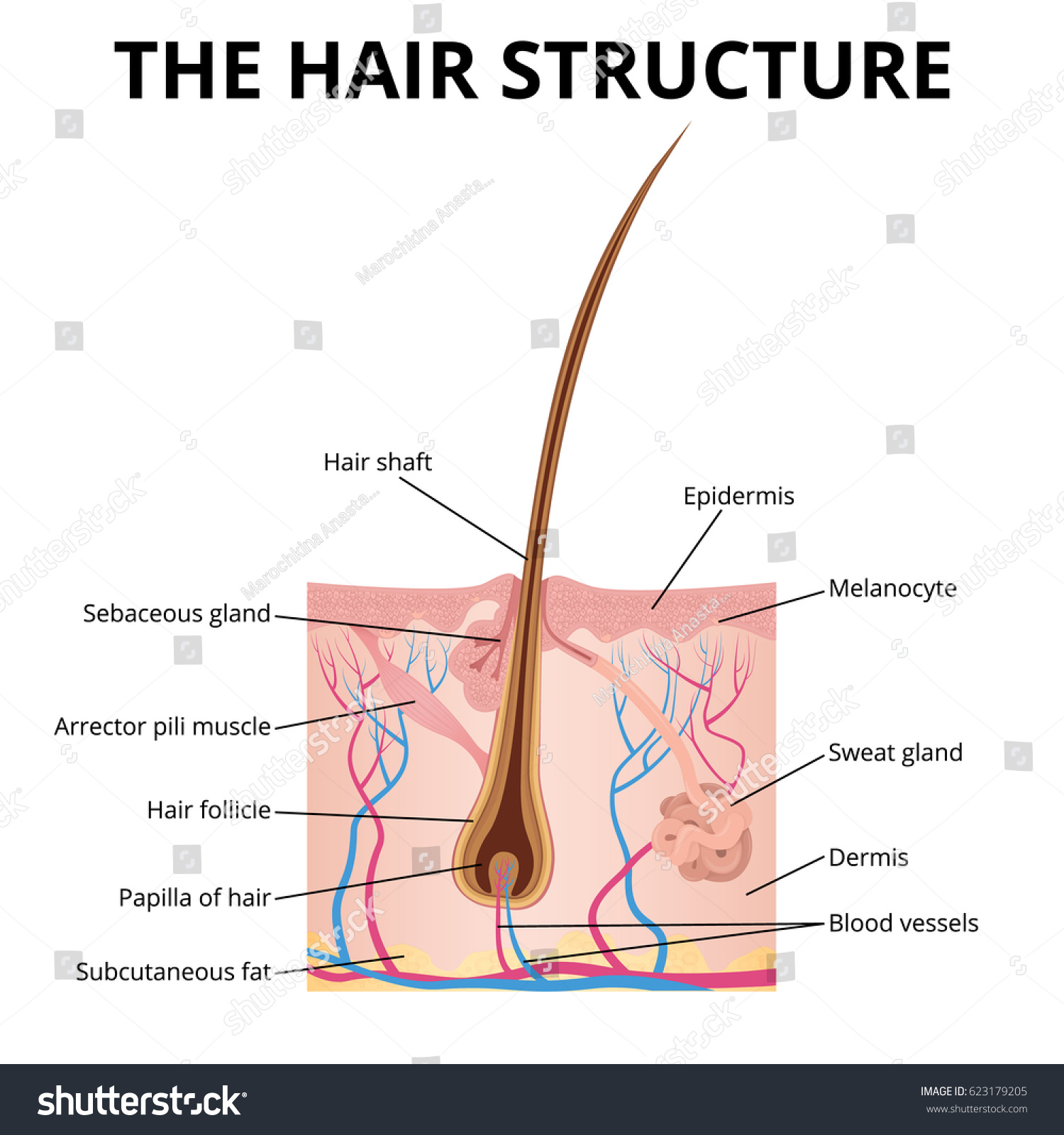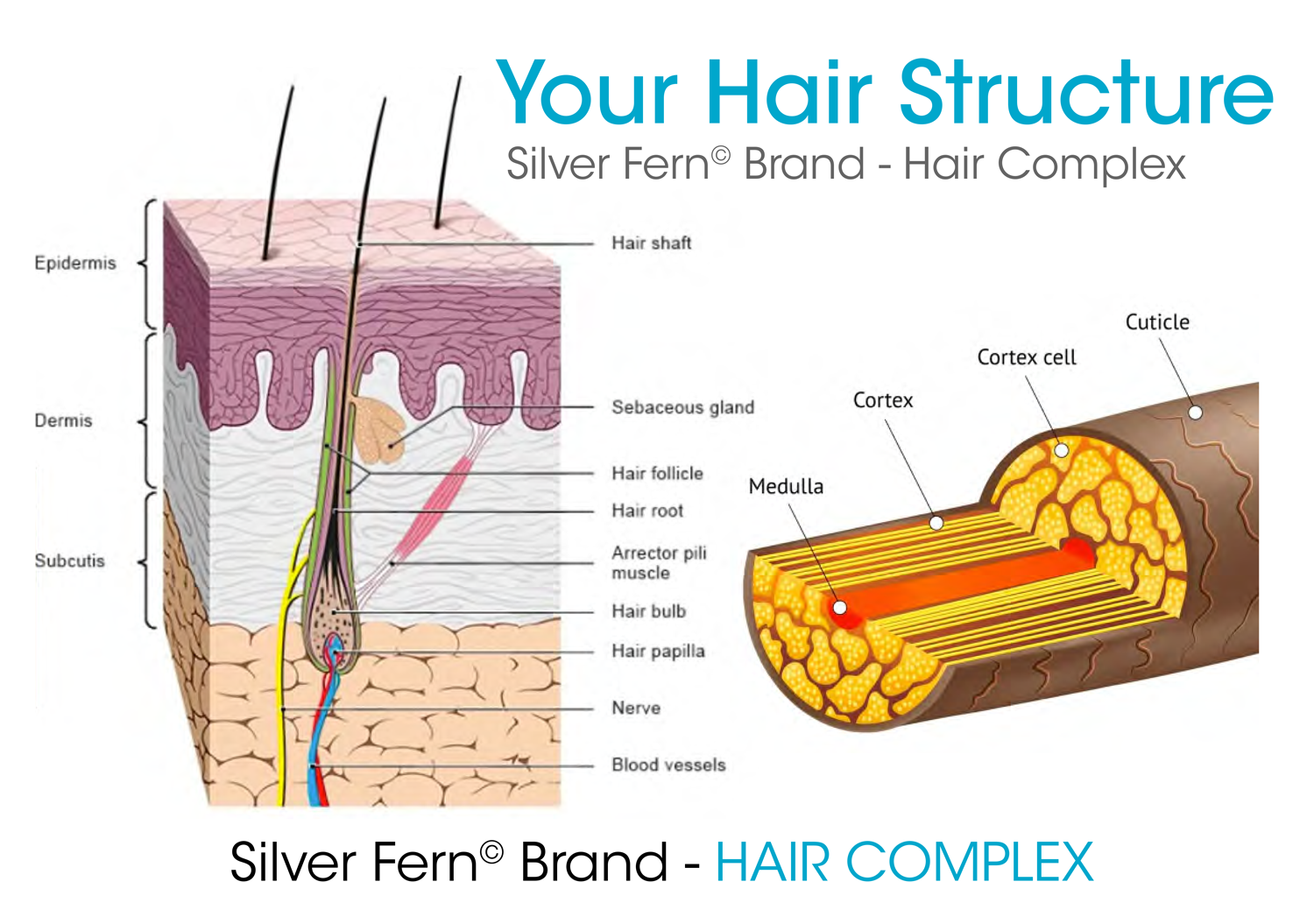Table Of Content

These signals are related to the coiled-coils arrangement of the keratin proteins in the cortex, the formation of intermediate filaments in the cortex, and lipids in the cell membrane complex of the hair. Statistical analysis of the corresponding molecular dimensions revealed a rather small distribution between different individuals. These general properties of human hair are observed in all hair independent of gender, colour or optical appearance of the hair (as listed in Table 1) within the number of individuals included in this study. The outer root sheath (ORS) has been recognized as a ready supply of multipotent stem cells that differentiate into several cell types, including melanocytes and keratinocytes. More specifically, these stem cells are thought to reside in a distinct bulge area located between the insertion of the arrector pili muscle and the ductal opening of the sebaceous gland.
Catagen
Hair is present on almost the entire surface of our body, excluding certain regions such as the palms of our hands, soles of our feet, and some genital areas. In certain places, hair is so small that it is virtually invisible to the naked eye and in other places it is quite obvious, like on our head and in our armpits. It explains how it grows, what it’s made of, and how it changes. Hair grows slowly, about half an inch per month, nourished by blood vessels around the follicles. Each hair starts in a follicle, which functions like a mini factory under the skin, producing hair cells. When it comes to hair structure, it's a little like an onion; it has layers, each with its own special job.

Human Biology
The hair follicle is comprised of layers of cells that work together to support and form the hair shaft. The cutaneous vascularization is ensured by arterioles that ascend into the dermis, forming a plexus that supplies the cutaneous structures and in particular the hair follicle. These arterioles are particularly concentrated in the lower part of the hair follicle and form a rich anastomotic network connected by cross shunts in contact with the papilla. A second capillary network is located in the sebaceous gland. These two networks are connected by a parallel system of larger vessels that descend along the sides of the follicle. 5 and and6,6, we identify three features present in all individuals.
Nonreactive Paths to Internal Changes: Modifying Hair's Structure from the Inside, Part 2 - Cosmetics & Toiletries
Nonreactive Paths to Internal Changes: Modifying Hair's Structure from the Inside, Part 2.
Posted: Fri, 10 Jun 2016 07:00:00 GMT [source]
The Growth Cycle
Reproduced from ref. 12 with permission from Elsevier, Copyright 2022. We note that in order to maximize the scattered signals, the entire hair strand was illuminated in our experiments using a relatively large X-ray beam. By illuminating selective parts of the hair, the occurrence of the signals that we observed can be determined as a function of their location within the hair in future experiments. It is interesting to note that differences are observed for the fraternal twins in Fig. This finding is in agreement with the expectation that individuals with similar genetics would share similar physical traits such as hair structure.
Loose areolar tissue
Cells of the hair matrix divide and differentiate to form the layers of the hair. The innermost layer of the hair follicle contains cells which become keratinised to an extent, forming the medulla. Surrounding the medulla, there is a keratinised layer of cells called the cortex. The third cell layer of the hair follicle is also keratinised, forming a cuticle which is thin but hard. These overlap creating a structure that supposedly prevents the hair from becoming matted.
Heatless Hair Curler Review – We Tried TikTok's Heatless Hair Curling Trick - Good Housekeeping
Heatless Hair Curler Review – We Tried TikTok's Heatless Hair Curling Trick.
Posted: Fri, 08 Apr 2022 07:00:00 GMT [source]
The rest of the hair, which is anchored in the follicle, lies below the surface of the skin and is referred to as the hair root. The hair root ends deep in the dermis at the hair bulb, and includes a layer of mitotically active basal cells called the hair matrix. The hair bulb surrounds the hair papilla, which is made of connective tissue and contains blood capillaries and nerve endings from the dermis (Figure 1). The molecular structure of the hair samples was studied using high-resolution X-ray diffraction, which covers length scales from molecules up to the organization of secondary structures. Despite the relatively small number of individuals (12) included in this study, some conclusions can be drawn.
During periods of stress, more hair enters the telogen phase and begins to fall out. Humans shed anywhere from 50 to 100 scalp hairs a day, but stress can cause a noticeable amount of hair loss. The skin of the scalp is highly innervated with blood vessels and sensory receptors known as Pacinian corpuscles. The corpuscles are egg-shaped and comprise many concentric rings of tissue layers. They are innervated with a free nerve ending and therefore work as deep pressure receptors to external stimuli. The cuticle is the outermost layer formed by flat overlapping cells in a scale-like formation (Robbins, 2012).
The rest of the hair is anchored in the follicle and it lies below the surface of the skin. The hair root is enveloped by the hair follicle which is a skin appendage that lies deep in the dermis of the skin. The hair shaft is the visible, nongrowing portion of a hair protruding from the skin. This part of the hair is not anchored to the hair follicle.
Biology of Human Hair: Know Your Hair to Control It
Vellus covers every part of the body except the palms of the hands, the soles of the feet, undersurfaces of the fingers and toes, and a few other places. The hairs of the scalp, eyebrows, and eyelashes are of separate types from these others and develop fairly early in life. On the scalp, where hair is usually densest and longest, the average total number of hairs is between 100,000 and 150,000. Human hair grows at a rate of about 0.5 inch (13 mm) per month.
When the cuticle is not intact, moisture escapes and the hair becomes dry. The cuticle's overlapping scales also protect the hair and add to its strength. Just like a plant needs the right soil, water, and sunshine to grow, your hair needs the right nutrients and care to stay strong and look great. At Fully Vital, our dedicated team has worked tirelessly to unlock the potential for healthier, fuller hair – no matter what stage of life you find yourself in. Fully Vital's products target these key areas, making sure your hair gets the love it deserves—right from the core. So, every layer has a role in keeping your hair healthy, looking its best, and feeling its best.
Additionally it is possible, and quite normal to have more than one kind of hair type, for instance having a mixture of both type 3a & 3b curls.
Like other proteins in the body, keratin is also a large molecule made up of smaller units called amino acids. The amino acids are joined together in a chain, like beads on a string. It has three distinct layers, and is made up of amino acids (proteins) held together by chemical bonds.
At the end of anagen, mitotic activity of the matrix cells is diminished and the follicle enters a highly controlled involutionary phase known as catagen. Catagen lasts approximately 2 weeks in humans, regardless of the site and follicle type [37]. During catagen the proximal of the hair shaft is keratinized and forms the club hair, whereas the distal part of the follicle is involuted by apoptosis [16, 38]. Hair shaft synthesis and pigmentation only take place in anagen [11]. The degree of axial symmetry within the hair bulb determines the curvature of the final hair structure [35].
These cells take place in certain functions of the follicle such as acting as a sensory organ and serving as an immunologic sentinel for the skin [5]. Note the both the internal and the external sheaths are continuous at their base with the papilla. This explains why the quality and appearance of the hair is dependent on the health and well-being of the dermal papilla. The external root sheath of a hair follicle is continuous along with the epidermis. The most important one of these glands is the sebaceous gland, which produces and secretes the natural oils lubricating hairs, namely sebum.
The hair follicles are tubular structures, having a base (hair bulb) that surrounds the hair papilla. During the growth phase, an extra outer layer (stratum basale) appears. Hats and coats are still required while doing outdoor activities in cold weather to prevent frostbite and hypothermia, but the hair on the human body does help to keep the internal temperature regulated. When the body is too cold, the arrector pili muscles found attached to hair follicles stand up, causing the hair in these follicles to do the same. These hairs then form a heat-trapping layer above the epidermis. The opposite actions occur when the body is too warm; the arrector muscles make the hair lie flat on the skin which allows heat to leave.

No comments:
Post a Comment